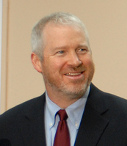SDOT has released its annual traffic collision report on Friday. Pedestrian collisions were up, last year, to 529, the second highest rate in the last 10 years. However, pedestrians were injured in a lower percentage of collisions than normal, and only 5 pedestrians were killed, the lowest since 2002. While conclusions can’t be drawn from one year, one could hope that a drop in injuries and deaths would continue from drivers going more slowly.
Overall, vehicle traffic volumes were slightly up for the year. The city counted fewer pedestrians walking downtown last year, but has since switched to a more thorough and standard pedestrian-counting methodology that will be used starting this year.
There is a lot of missing data with regard to pedestrian collisions, however where data was available for drivers, 256 of them did not yield the right of way to pedestrians, which was the biggest cause of pedestrian collisions.
The report indicates that SPD and SDOT work together to target enforcement efforts. According to Acting City Traffic Engineer, Brian Kemper, “When we [SDOT] have locations of concern, we work with SPD…and provide the engineering or traffic solution that is appropriate.” The improvements the city has made, “have been pretty effective,” but it requires a team effort between SDOT and SPD of education, engineering, and enforcement.
SPD did conduct 42 pedestrian safety emphasis patrols, where a plain clothes officer acts as a pedestrian crossing the street legally, and 48 violations were written as a result of these stings.
Though the leading cause of pedestrian collisions is drivers failing to yield the right of way, SDOT issued 8 times more infractions against pedestrians than they did against drivers failing to yield the right of way to pedestrians. In fact, the violations issued to drivers for failure to yield to pedestrians in 2010 was down to half of 2009’s level. Also, remarkably, the number of citations issued in school zones were dropped by over 60%.
SPD does deploy a van to monitor speeds in school zones from state funding authorized in 2009, resulting in the issuaance of 1,808 citations last year, averaging a decrease in speed of between 5 and 10 miles per hour in school zones.
The report provides statistics related to the lane rechannelization at Fauntleroy Way SW, and shows that collisions dropped by 31% and injuries dropped by 73%. Rush hour travel time for drivers did increase by 4 to 65 seconds from Alaska to California Ave.
Also, since 2006, more pedesrian collisions have happend in November than any other month.
The Seattle PI has a general recap of the report, as does PubliCola.
A link to the final report can be found here



 Tonight marked the 10 year anniversary celebration of Seattle’s pedestrian advocacy organization,
Tonight marked the 10 year anniversary celebration of Seattle’s pedestrian advocacy organization, 

